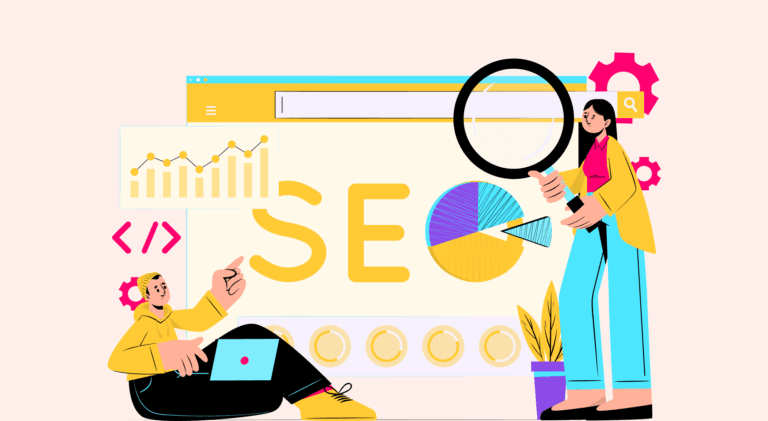
As a business owner or marketer, you know how important it is to have a strong online presence. Search engine optimization (SEO) is crucial, as it helps your website rank higher in search engine results and attract more organic traffic. But how do you plan your SEO strategy and set realistic goals? We’ll clue you in on the answer — SEO forecasting.
This blog post will explore what SEO forecasting is, how it works, and why it is important. We’ll also review some factors to consider when using SEO forecasts.

What is SEO Forecasting?
SEO forecasting is the process of predicting future SEO performance based on past and current data. This can include predicting organic search traffic, rankings, and other metrics important for SEO. You can do SEO forecasting using manual calculations, spreadsheet software, and specialized SEO forecasting tools.
SEO forecasting typically involves analyzing various data sources, including website traffic data, search engine rankings, and industry trends. This data is then used to predict how a website’s SEO performance will likely change over time.
For example, an SEO forecast might predict that a website’s organic search traffic will increase by 10% over the next six months based on past trends and current performance.
How Does SEO Forecasting Work?
There are a few key steps involved in SEO forecasting:
1. Gather data
The first step in SEO forecasting is to gather data on your website’s current SEO performance. This might include data on organic search traffic, search engine rankings, and other relevant metrics. You can gather this data using tools like Google Analytics, Google Search Console, and specialized SEO tools.

2. Analyze trends
Once you have your data, you can start analyzing trends to see how your website’s SEO performance has changed over time. This might include looking at things like the direction of traffic, the rate of change, and the impact of specific events or actions on your website’s SEO performance.
3. Identify drivers
The next step in SEO forecasting is identifying the drivers of your website’s SEO performance. This includes changes to your website’s content, technical SEO, or backlink profile. Identifying the drivers of your SEO performance can help you understand what factors are most important in influencing your website’s rankings and traffic.
4. Build a model
Once you have identified the drivers of your website’s SEO performance, you can use this information to build a model that predicts how your website’s SEO performance will likely change over time. You can take a few different approaches to build an SEO forecasting model, including statistical modeling techniques, machine learning algorithms, or a combination of both.
5. Test and refine
After you have built your SEO forecasting model, it’s important to test and refine it to ensure that it is accurate and reliable. This might involve comparing the model’s predictions to actual data, adjusting the model to account for any errors or discrepancies, and testing the model with different scenarios to see how it performs.
Why is SEO Forecasting Important?
SEO forecasting can be a valuable tool for businesses and marketers for a few reasons:
- Setting realistic goals: SEO forecasting can help you set realistic goals for your website’s SEO performance. By understanding how your website’s SEO will likely change over time, you can set achievable goals and align them with your overall business objectives.

- Allocating resources: SEO forecasting can also help you allocate resources more effectively. By understanding how your website’s SEO will likely change over time, you can allocate resources to maximize your return on investment.
For example, suppose you know that a particular action is likely to have a significant impact on your website’s SEO. In that case, you can allocate more resources to that action to achieve better results.
- Identifying opportunities: SEO forecasting can also help you identify opportunities for improving your website’s SEO performance. By analyzing trends and drivers, you can identify areas where your website is performing well and where it could be improved. This can help you focus on the most impactful actions and make the most of your resources.

- Managing risk: Finally, SEO forecasting can help you manage risk by allowing you to anticipate potential changes in your website’s SEO performance. This can help you plan for potential challenges and adjust your strategy to minimize any negative impact on your website’s rankings and traffic.
Things to Keep In Mind While SEO Forecasting
There are a few things to keep in mind when using SEO forecasts.

- SEO forecasts are not perfect: No matter how accurate your SEO forecasting model is, it is unlikely to be 100% accurate. There are simply too many variables that can impact your website’s SEO performance to make perfect predictions. This means you should view your SEO forecasts as a guide rather than a hard and fast rule.
- SEO forecasts are based on past data: They are inherently limited in predicting the future. There may be events or changes that occur in the future that your model doesn’t account for, which could impact your website’s SEO performance in unexpected ways.
- SEO forecasts are only as good as the data you use: The accuracy of your SEO forecasts will depend on the quality and completeness of the data you use. Make sure you use reliable data sources and have a representative sample of data to work with.
Wrapping Up
SEO forecasting is a valuable tool that can help businesses and marketers plan and execute their SEO strategies more effectively. By predicting future SEO performance based on past and current data, SEO forecasting allows you to set realistic goals, allocate resources more effectively, identify opportunities for improvement, and manage risk. While SEO forecasting is not perfect, it can still be useful for businesses looking to optimize their online presence.

FAQs
Many tools are available for SEO forecasting, including manual calculations, spreadsheet software, and specialized SEO forecasting tools. Some popular options include Ahrefs and Google Data Studio. It’s important to choose a tool that meets your specific needs and fits within your budget.
There are several SEO forecasting metrics you can consider when trying to predict the future performance of your website or a specific SEO campaign. Here are a few examples:
1. Search volume
2. Domain authority
3. Backlinks
4. Website traffic
5. On-page optimization
Yes, using third-party data is a great idea because SEO is not a single-player game. Third-party data can be a useful way to validate your own data and get a more accurate picture of what’s happening. It can also supplement your data and provide a complete picture.
Third-party data can provide a broader perspective on a given market or industry, which can be helpful when trying to make predictions. Using third-party data can also help to reduce bias in your forecasting efforts. By incorporating data from various sources, you can get a more objective view of the situation.
Latest Blogs
In this blog, explore the golden rules of using AI marketing tools so you can leverage the benefits to their maximum potential.
In this blog, you’ll learn how to avoid the pitfalls of SEO over-optimization while enhancing your site’s performance.
In this article, we’ll take a look at what AMP is, its advantages and disadvantages, and how it affects SEO.
Get your hands on the latest news!
Similar Posts

SEO
5 mins read
How to Choose the Best AI Writer (+ 9 Key Features)

SEO
5 mins read
Using Google Review Snippets to Optimize Your SEO

SEO
5 mins read